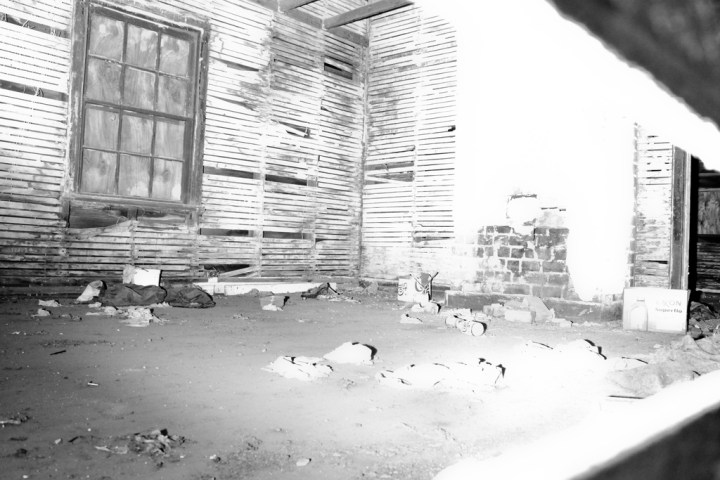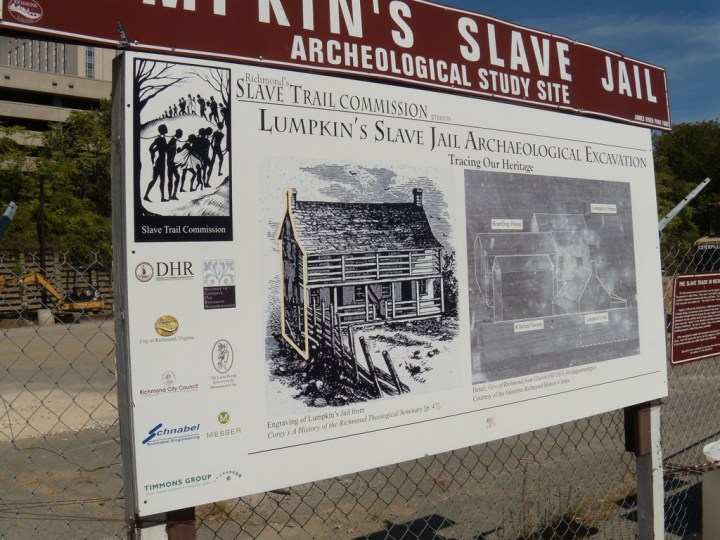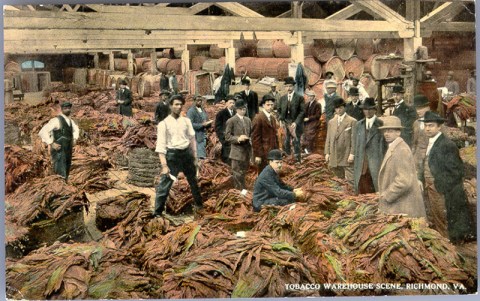6 Things Archaeologists Discovered That Will Make You Rethink Virginia's History
Virginians love their history. And that’s fair. We have a lot to be proud of here in the Old Dominion. As the “birthplace of a nation,” not to mention the birthplace of many of the founding fathers and no fewer than 8 presidents, Virginia is, truly, the heart of much of America’s earliest history. Well…recorded history, that is.
But what lies beneath the surface? And for once, I’m not speaking metaphorically. Really…what’s underneath the ground we walk on today? The answer is history. Millions of years of history, in fact. As the home of some of the oldest and most well-dated archaeological digs in the nation, Virginia had given up some pretty incredible lessons in recent years. Not just on the history we know, but many things we had never even thought of. The following list details just a few of archaeological discoveries here our state that might make you think a little more about how much history we actually have…
1. A 7 million-year-old whale skeleton, Yorktown
In 2012, a worker at the Naval Weapons Station in Yorktown was walking along the beach when she came across something unexpected – specifically, part of a whale skeleton. When archaeologists and paleontologists unearthed the skeleton in 2013, they estimated it to be between 7 and 9 million-years-old.

Other whale fossils have been found in Virginia, including several between 4 and 5 million years-old along the Chesapeake and another dating around 7 million-years-old found on the banks of the Potomac in July 2013. But what makes the Yorktown whale special is that it is older, bigger (up to 60-feet) and more intact than most of the others. Archaeologists uncovered large portions of intact shoulder bones, ribs and vertebrae, as well as intact flipper, which is a rare find. The skeleton was sent to the Virginia Museum of Natural History in Martinsville for analysis.
2. The Story of Jane: Evidence of Cannibalism in Jamestowne
Known as “The Starving Time,” the winter of 1609-1610 harsh in Jamestowne. Food was scarce, trouble with local Indians prevented hunting and foraging and an influx of 300 new colonists in the summer of 1609 stretched already thin supplies even thinner. By spring, nearly 80% of the colonists died. While firsthand accounts from that winter reference cannibalism, as well as the consumption of cats, dogs, horses and rats, evidence of actual human consumption remained elusive until recently. In 2013, archaeologists recovered part of a fractured skull and a shinbone belonging to a teenage girl from a trash deposit in the cellar of an excavated building built in 1608. Saw and chop marks found on the skeleton indicate that she had been, essentially,”butchered.” The girl, dubbed “Jane,” provides the first solid evidence of European cannibalism in the New World – and shows just how desperately the colonists clung to life that winter.

William Kelso, director of archeology at Historic Jamestowne, and Doug Owsley, head of physical anthropology at the Smithsonian’s National Museum of Natural History, worked together to determine the girl’s story. Forensic research shows that she was 14 at the time of her death, her diet indicated that she was well-born or a servant to a wealthy family and she was, most likely, a recent arrival to the colony.
3. Fort Monroe Contraband Camp in Hampton: The First Free, Self-Contained African-American Community
In 2014, archaeologist unearthed what they believe to be the site of the Grand Contraband Camp at Fort Monroe. After uncovering what appeared to be an alleyway and a well, as well as other convincing artifacts, archaeologist report that they have evidence to support that this is the site where thousands of slaves fled seeking asylum during the Civil War. As slaves were considered possession, the Union Army held them as “contraband” from the south, granting them a freedom of sorts, if only within the confines of the fort itself.

The significance of the Hampton site is that it was the first of its kind, beginning shortly after the start of the Civil War when three slave men from Hampton were taken by their master to begin work on a Confederate battery at Sewell’s Point near Norfolk. The men fled and received admittance to nearby Fort Monroe. Soon, dozens more came, followed by hundreds, then thousands, in the coming years. Conditions were poor, much like modern day refugee camps, but at the very least, they tasted freedom. The camps existed as independent communities and although many died from the unsanitary conditions, others went on to serve in the Union Army and later tasted true freedom after Abraham Lincoln passed the Emancipation Proclamation.

4. 1608 Jamestown Church: The Importance of Religion in the Early Colonies
While Jamestown is certainly a dominant site for archaeological discovery, not just in this article, but in Virginia’s history, this particular site provides particular insight into the founding of Virginia. Discovered in 2010, the Jamestown church ruins replicated the written recording of a building 60 feet in length. By far, one of the most dominant buildings in the settlement, the church underscores the importance of religion in early colonial life.

Of equal social significance, this is also the church where Jamestown historians claim Pocahontas, daughter of the powerful Tidewater chief, Powhatan, married English colonist and tobacco planter, John Rolfe, in 1614. (Although, other reports claim she and Rolfe were married at the Henricus settlement near Richmond.) After being captured in 1613 during hostilities between the English and Indians, she was held for ransom. Pocahontas converted to Christianity during her captivity and when given the choice to remain with the English or return to her tribe, she chose to stay. Her marriage to Rolfe followed shortly after and in 1615, she bore their first and only son, Thomas Rolfe.

5. Cactus Hill, Sussex County
Beginning in the mid-1990s, archaeologists began uncovering evidence of human habitation on the banks of the Nottoway River in Northeastern Sussex County. These findings dated back as many as 18,000 – 20,000 years ago. This discovery pre-dates the previous estimates that the Americas were only inhabited during the “Clovis Period,” or 13,000 years ago, and changes the paleontological theory on both how long people have been in the Western Hemisphere, as well how they arrived.

Artifacts to support the claims include pottery, arrowheads, stone tools, raw materials and stone hearths. The Cactus Hill Site is one of the oldest and most well-dated sites in the Americas and was added to the Virginia Landmarks Register in 2001.
6. Lumpkin’s Jail, Richmond
Near where the Virginia capitol building sits today, is the site of Lumpkin’s Jail, a holding site for slaves from the 1830s until after the Civil War. Prior to emancipation, Richmond was the largest slave trading center outside of New Orleans. It was here that Robert Lumpkin, owner and operator of Lumpkin’s Jail, ran one of the largest slave trading operations in the South for more than 20 years.

In 2009, archaeologists and other researchers unearthed the foundation of the jail, known as the “devil’s half-acre,” a 2 1/2 story building where hundreds of slave had been held and many tortured during their confinement. Among the discoveries at the site are pieces of pottery, toys and cells where slaves were held.

After nearly 150 years, the site was buried 14-feet underground in Shockoe Bottom at the lowest point of the area – both physically and metaphorically. Lumpkin, despite having a black mistress with whom he fathered 5 children, was known as a cruel man. The unearthing of his jail only reinforces the horrid condition under which slave were held before being sold into unknown hands.
While not all of the archaeological finds in Virginia are glorious – they are, without a doubt, fascinating. They show the true history of our nation, both long before Europeans came, and long after. What archaeological sites are you familiar with in Virginia? Did we miss one of your favorites? If so, let us know in the comments below!
OnlyInYourState may earn compensation through affiliate links in this article. As an Amazon Associate, we earn from qualifying purchases.




